Tools:
- Stiff brush or squeegee
- Soft brush
- Pointing trowel
- Pointing bar
- Hose/buckets/plastic drums
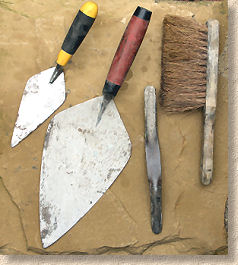
Pointing Trowel - Brick Trowel - Pointing Bar - Cleaning brush
Technique:
Wet grouting is a technique that aims to speed-up the jointing process while reducing the required skill level. Although these aims are achievable in theory, in practice wet grouting can deliver highly variable results, and when not undertaken methodically, may actually take longer than hand-pointing. However, done properly, it is a very effective method both in terms of structural competence and cost-effectiveness.
The paving to be jointed is wetted in advance, spraying with a hose or sloshing buckets of clean water over as much of the surface as will be jointed in the next 10-30 minutes. Should the surface dry off (as may happen in summer), it should be re-wetted. A very wet and sloppy, site-mixed 3:1 mortar referred to as "grout" is prepared and spread over the pre-wetted paving using a soft brush or a squeegee to chase it into the empty joints.
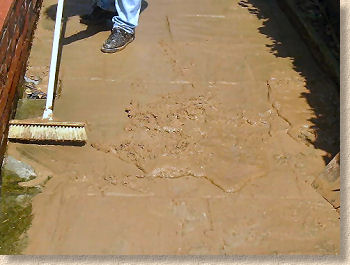
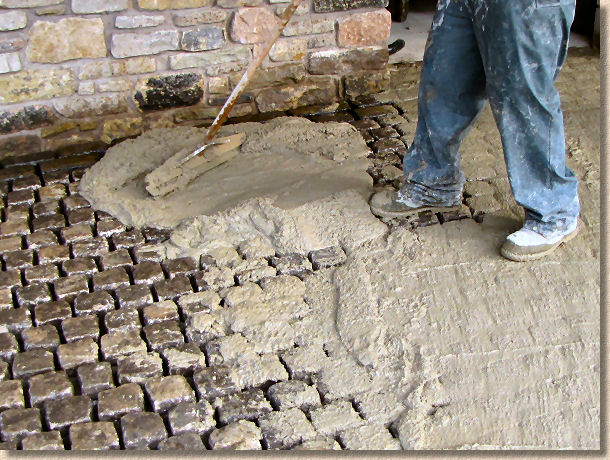
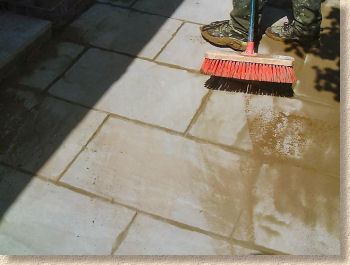
Once the grout has started to set, it is scraped off the surface of the paving, using a stiff brush or rubber squeegee, aided by a hose. The process is repeated and repeated and repeated again until all traces of cementitious material has been removed from the surface. This is very, VERY tiresome process, and usually delegated to a junior member of staff.
Most contractors use additional water to aid the cleaning process, but care is required as too much water can wash the grout out of the joints and may also weaken the uppermost section of mortar by washing out some of the cement content. Cement particles are much finer and lighter in weight than sand grains, and are more easily carried away when water floods across a freshly filled mortar joint.
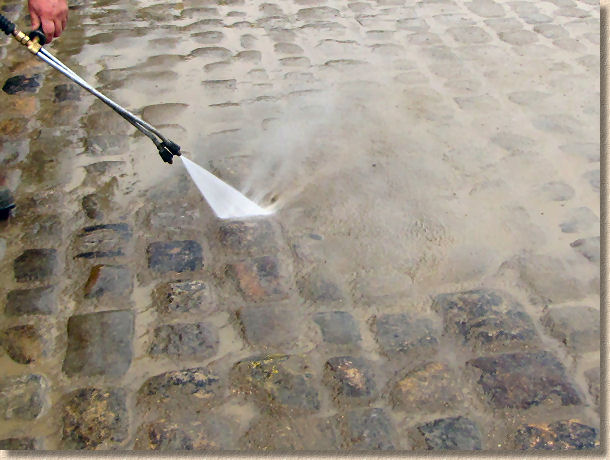
However, just to make an awkward job that bit more difficult, relying solely on brushing with first a stiff and then a soft brush as the surface dries, removes most of the mortar but tends to leave behind a 'haze' of cement that discolours the paving, permanently. When working with some of the more traditional native stone, this could be countered by undertaking an " Acid Wash " 5-10 days after jointing is complete, a technique that SHOULD NOT be used with limestone, travertine or Indian sandstone.

Acid Washing and acid-based cleaners can RUIN some paving!
See this page
So: it becomes a compromise between using a minimal amount of additional "clean off" water and a lot of brush, brush, brushing to remove as much of the mortar residue as is physically possible,
Once cleaned off, the joints can be "struck" (smoothed with a pointing bar or pointing trowel) if required, but this is not always necessary, especially on narrower joints (9mm or less).
Examples
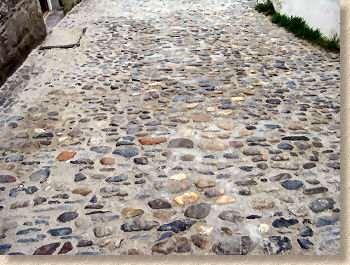
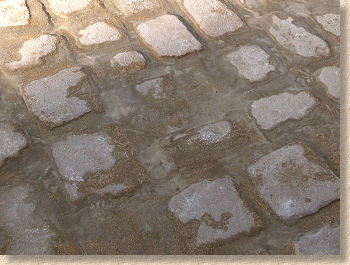
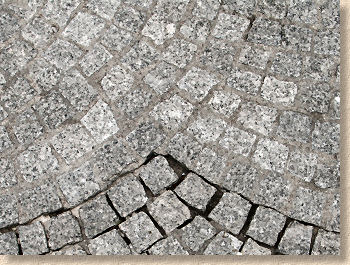
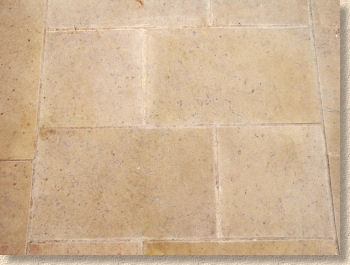
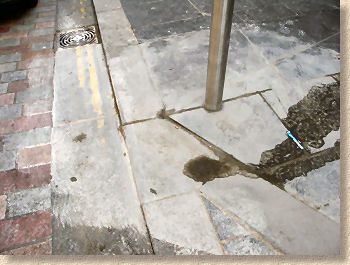
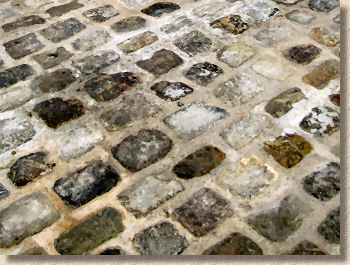
Comments:
Wet grouting can be much faster than hand pointing but exceptional care is needed to ensure as much cement as possible is removed from the surface before it dries. Even when meticulous care is employed, it is not uncommon for there to be a haze of the very finest cement particles remaining on the surface. This can (and does) seriously disfigure a pavement and should not be overlooked when considering the most appropriate jointing method. While some commercial projects might be willing to accept light hazing, secure in the knowledge that traffic, both foot and vehicular, will remove this 'frosting' in a relatively short period of time, high-quality private work for over-particular homeowners should rely on an alternative method if the contractor wants to get paid.
Other pointing and jointing pages...
- Introduction
- Terms & definitions
- Pointing Styles
- Spacers for Paving
- Cement Mortars
- - Hand Pointing
- - Pointing Riven Flagstones Using Coloured Mortar: A Case Study
- - Wet Grouting
- - Dry Grouting
- - Slurry Grouting
- - Steintec Tufftop Slurry Grouting
- - Gun Grouting
- - Poured Grouting
- Resin Mortars
- - Polymerics
- - GftK Polymerics: A Product Study - VDW 840+
- - Romex Polymeric Mortars: A Product Study
- - Jointex Polymeric Mortar: A Product Study
- - Slurries
- - GftK Slurry Mortars: A Product Study - VDW 800 Permeable
- - GftK Slurry Mortars: A Product Study - VDW 850
- Re-jointing paving
- Pitch Jointing
- Loose Fill Jointing
- - Stabilisation
- Alternative Jointing Materials
